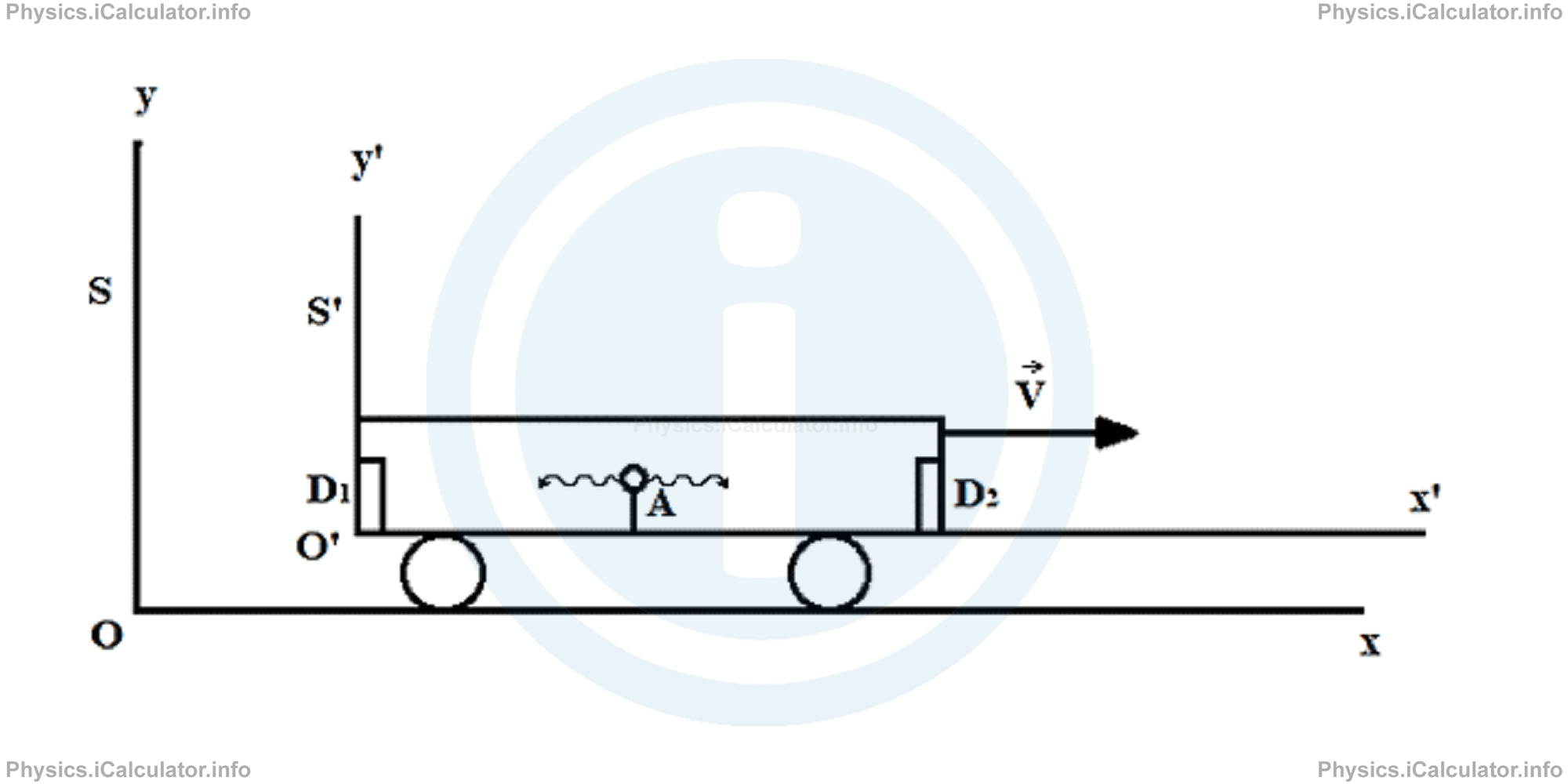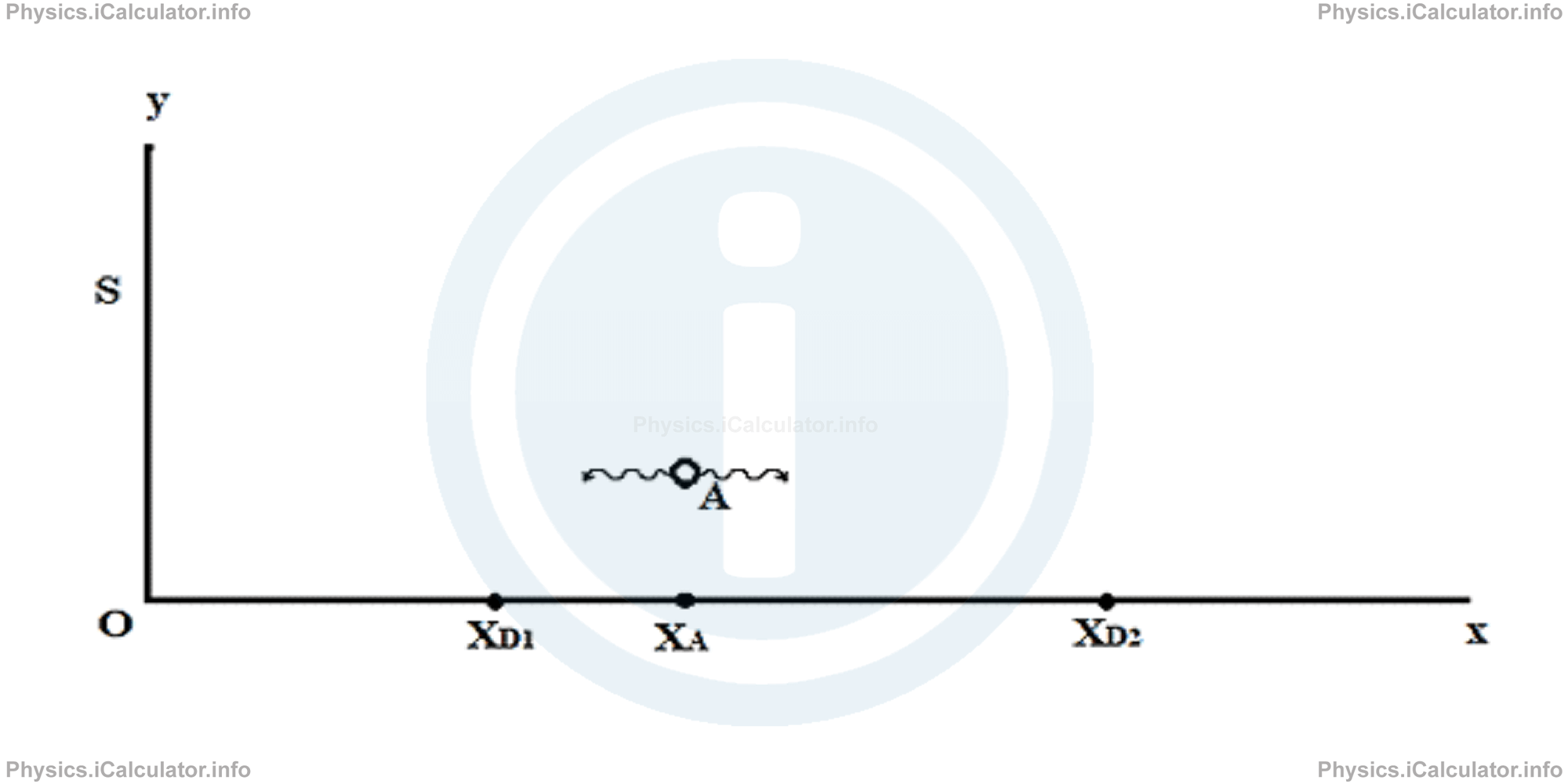Menu
Physics Lesson 18.3.1 - Einstein Postulates and Relativity of Simultaneity
Please provide a rating, it takes seconds and helps us to keep this resource free for all to use
Welcome to our Physics lesson on Einstein Postulates and Relativity of Simultaneity, this is the first lesson of our suite of physics lessons covering the topic of Space and Time in Einstein Theory of Relativity, you can find links to the other lessons within this tutorial and access additional physics learning resources below this lesson.
Einstein Postulates and Relativity of Simultaneity
The information available on Relativity before Einstein (including the experimental analysis and other observations made until then) led to a conceptual confusion, which lasted for many years. First, the propagation of EM waves in vacuum without the need for a material medium is a fact, as sunlight comes to our eyes after travelling a very long distance in vacuum. If the pseudo-concept of cosmic ether is used to assign a medium to the empty space, there is a big problem, as the relative motion of light to this ether cannot be detected. On the other hand, if we abandon the use of this concept, we obtain a finite speed for light, i.e. light must have the same speed in all systems of reference, the equation of which, is
However, the Galilean transformations contradict this claim. In 1905, Einstein (only 26 years old in that time), found the solution, bringing a revolution in Physics. He started this revolution from the two postulates we discussed in the previous articles:
- All physical phenomena (mechanical, optical, etc.) occur in the same way in all inertial systems of reference.
- The speed of light in vacuum is the same in all inertial systems of reference.
From the first postulate, it derives that we are not able to determine whether a system is at rest or it is moving; this can neither be achieved by analyzing the mechanical phenomena nor optical ones. The speed of light is not involved in any of calculations.
The second postulate is even stranger and unexpected. The common understanding on relativity is based on the concept of a changeable speed that depends on the system of reference used to describe the motion. According to Einstein, this is valid for all material objects but not for the light. Obviously, the Newtonian concepts on space and time are not valid anymore; another approach must be used to describe this part of physics - concepts that form the framework of Einstein's theory, known as the "Special Theory of Relativity".
Let's explain this theory through the help of a "thought experiment". A bus is moving at a very high (constant) velocity V⃗ on a linear and very long railway, as shown in the figure below.

The bus has two doors D1 and D2 (one at either end), which open by means of photo-relays, i.e. they open from inside only after receiving a light signal released from the source A, which is located at centre of the bus. We consider two inertial systems of reference: S (related to the ground, the centre of which, is the point O), and S' (related to the bus, the centre of which, is the point O', i.e. the leftmost lower point of the bus).
Let's consider an observer inside the bus. From the isotropy of light - a property we discussed in the previous tutorial - two light rays emitted simultaneously from the source A in opposite direction, will reach the doors D1 and D2 at the same time, and as a result, a simultaneous opening of the two doors will take place. This is because light travels the same distance at the same speed (the source A is equidistant from each door).
As for another observer at rest outside the bus (connected to the system S), he will see another version of the event; since the bus is moving due right, the light ray emitted from the source A due left, will reach the door D1 earlier than the opposite ray emitted from A towards D2. This is because the distance from A to D1 now is shorter than the distance from A to D2, as shown in the figure. In this way, the doors do not open at the same time.

From the above experiment, it is clear that the simultaneity of the events observed is relative - a conclusion that contradicts the Newtonian concept of absolute time, which was believed to be equal for all inertial frames of reference. In fact, time simultaneity is nothing else but a special case of non-homogenous time, in which the difference of times for the same event measured by two observers in two inertial frames of reference is zero.
From this viewpoint, Einstein in his theory formulated the idea of different-flowing times in different inertial frames of reference. There is no absolute time anymore. The time flow that characterizes the chronology of events is an inner property of a given inertial frame of reference. For example, when we speak about two events occurring at a time difference (interval) of 1 s, we have not provided a complete information if the inertial system of reference related to the events is not explicitly declared.
Giving that now the existence of cosmic ether is already rejected, it is meaningless to speak about an absolute space. Indeed, the existence of a space without any object or process in it used as reference frames for position coordination (up-and-down, left-and-right, back-and-forth), is unthinkable. Likewise, an absolute time, without objects and chronological references (earlier-or-later) cannot be imagined. Therefore, the only acceptable theory is the relativistic approach of Einstein, known as the Special Theory of Relativity.
You have reached the end of Physics lesson 18.3.1 Einstein Postulates and Relativity of Simultaneity. There are 3 lessons in this physics tutorial covering Space and Time in Einstein Theory of Relativity, you can access all the lessons from this tutorial below.
More Space and Time in Einstein Theory of Relativity Lessons and Learning Resources
Whats next?
Enjoy the "Einstein Postulates and Relativity of Simultaneity" physics lesson? People who liked the "Space and Time in Einstein Theory of Relativity lesson found the following resources useful:
- Einstein Feedback. Helps other - Leave a rating for this einstein (see below)
- Relativity Physics tutorial: Space and Time in Einstein Theory of Relativity. Read the Space and Time in Einstein Theory of Relativity physics tutorial and build your physics knowledge of Relativity
- Relativity Revision Notes: Space and Time in Einstein Theory of Relativity. Print the notes so you can revise the key points covered in the physics tutorial for Space and Time in Einstein Theory of Relativity
- Relativity Practice Questions: Space and Time in Einstein Theory of Relativity. Test and improve your knowledge of Space and Time in Einstein Theory of Relativity with example questins and answers
- Check your calculations for Relativity questions with our excellent Relativity calculators which contain full equations and calculations clearly displayed line by line. See the Relativity Calculators by iCalculator™ below.
- Continuing learning relativity - read our next physics tutorial: Relativistic Transformation of Velocity and the Relativistic Doppler Effect
Help others Learning Physics just like you
Please provide a rating, it takes seconds and helps us to keep this resource free for all to use
We hope you found this Physics lesson "Space and Time in Einstein Theory of Relativity" useful. If you did it would be great if you could spare the time to rate this physics lesson (simply click on the number of stars that match your assessment of this physics learning aide) and/or share on social media, this helps us identify popular tutorials and calculators and expand our free learning resources to support our users around the world have free access to expand their knowledge of physics and other disciplines.
Relativity Calculators by iCalculator™
- Energy Calculator In Relativistic Events
- Frequency Calculator During Doppler Effect In Relativistic Events
- Length Calculator In Relativistic Events
- Lorentz Transformation Of Coordinates Calculator
- Lorentz Transformation Of Velocity Calculator
- Mass And Impulse Calculator In Relativistic Events
- Time Calculator In Relativistic Events
- Velocity Calculator In Relativistic Events